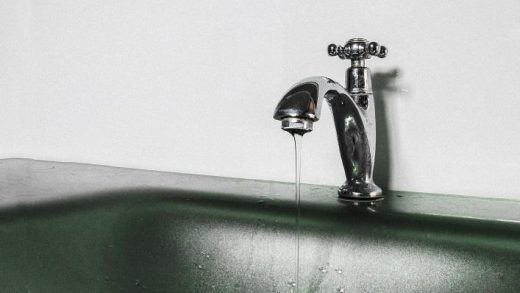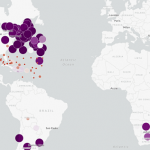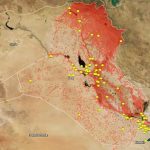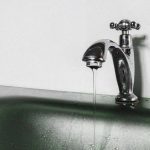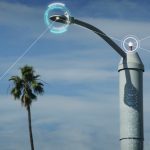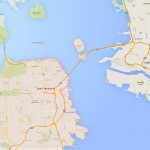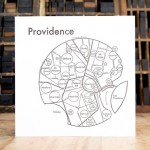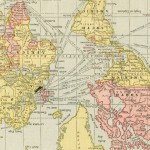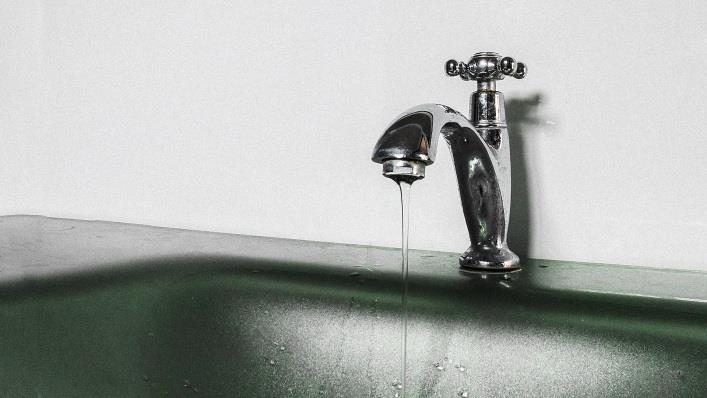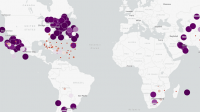This Map Will Remind You Why You Can’t Always Trust Your Tap Water
In 2014, Michael Hickey, a resident of Hoosick Falls, a small town in upstate New York, sent a sample of his tap water to a lab in Canada. Hickey’s father had died of cancer the year before, and he had long suspected the drinking water in his town of being unsafe for human consumption. Because Hoosick Falls is so tiny, the Environmental Protection Agency doesn’t test its water. So Hickey undertook the investigation independently. When the results came back from Canada, they showed a level of chemical contamination unsafe for human consumption.
The chemical culprit, perfluorooctanoic acid (PFOA), is, along with perfluorooctanesulfonic acid (PFOS), one of two highly fluorinated toxic chemicals, known as PFCs, that are devastating to human health yet unregulated by the EPA. Leaked into water supplies by the chemical manufacturing processes of products like DuPont’s Teflon and 3M’s Scotchgard, the contaminants are linked to diseases like cancer, kidney failure, thyroid problems, and weakened immune systems. A new mapping project from the Environmental Working Group and Northeastern University has detailed–using data from the EPA and information on publicly documented cases like Hoosick Falls–PFC pollution in the tap supplies of 15 million Americans in 27 states, and around 50 military and industrial sites (you can view the interactive map here).
While there are no federal regulations around the level of PFCs permissible in water supplies, the chemicals are subject to the EPA’s Unregulated Contaminant Monitoring Rule, which since 2013 has mandated that all public water systems serving 10,000 customers or more have their water supplies tested for PFOA, PFOS, and four other PFCs. For these unregulated contaminants, the EPA sets a “guideline” determining a safe level for consumption. For PFOA, that guideline was originally 400 parts per trillion (imagine 400 drops of water in an Olympic-sized swimming pool). But after pressure from communities and legislators following research that found the chemicals were harmful at much lower levels, the EPA lowered that level to 70 ppt in 2015. The EWG, however, follows the findings of Phillipe Grandjean of the Harvard T.H. Chan School of Health and Richard Clapp of UMass-Lowell, and maintains that 1 ppt is the only safe level of such PFCs. In Hoosick Falls, the water contained levels of PFOA around 600 parts per trillion.
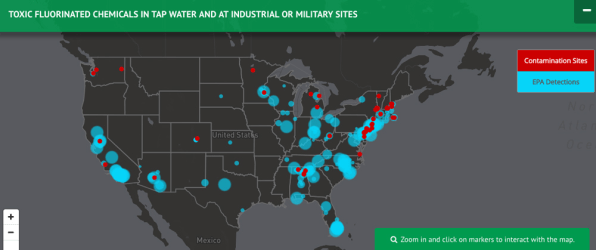
“The response to this level of pollution is really just outrage,” David Andrews, a senior scientist at EWG, tells Fast Company. “These are chemicals that federal agencies have known is extremely toxic for decades, but our system of drinking water regulation is inept at setting any new standards.”
Bill Walker, another senior scientist at EWG, adds that the effort to establish truly health-protective regulatory levels often falls prey to corporate resistance. “It’s a negotiation between scientists and regulators and the polluting industry and water agencies, which will resist, saying they don’t want to spend the money to clean up the water supply. So they end up setting a so-called enforceable level as opposed to a level that’s best for people’s health,” he tells Fast Company.
The interactive map, which EWG and Northeastern University will update as more reports of contamination come to light, is the most comprehensive resource to track PFC pollution in U.S. water supplies. “It should be a wake-up call for people that they should no longer assume that their best interests are being looked out for and that the process of evaluating the safety of our drinking water supply has been corrupted,” Andrews says.
Absent any federal action to establish a real, health-protective regulation for these chemicals, which Walker says is unlikely under the Trump administration, which is draining the EPA of the resources and funding necessary to carry out more thorough monitoring, states and citizens will be the ones driving change on this issue. The EWG wants to make this public to let people know about the dangers in their water supply and help galvanize citizen response since that’s the only possible recourse.
And it’s been effective: Pressure from Hoosick Falls citizens has resulted in the suspected contaminating company, Saint-Gobain—which for decades has made Teflon-coated materials at a nearby factory—agreeing to install a temporary water-treatment facility while an investigation into the water supply continues. And following states like Minnesota, New Jersey, and Vermont, which have set or proposed PFC limits between 14 and 35 ppt, New York senators Kirsten Gillibrand and Charles Schumer have introduced a new bill mandating that their state does the same.
The most comprehensive resource to date on chemical contamination shows that the taps of 15 million Americans pour out unsafe water.
In 2014, Michael Hickey, a resident of Hoosick Falls, a small town in upstate New York, sent a sample of his tap water to a lab in Canada. Hickey’s father had died of cancer the year before, and he had long suspected the drinking water in his town of being unsafe for human consumption. Because Hoosick Falls is so tiny, the Environmental Protection Agency doesn’t test its water. So Hickey undertook the investigation independently. When the results came back from Canada, they showed a level of chemical contamination unsafe for human consumption.
Fast Company , Read Full Story
(37)

